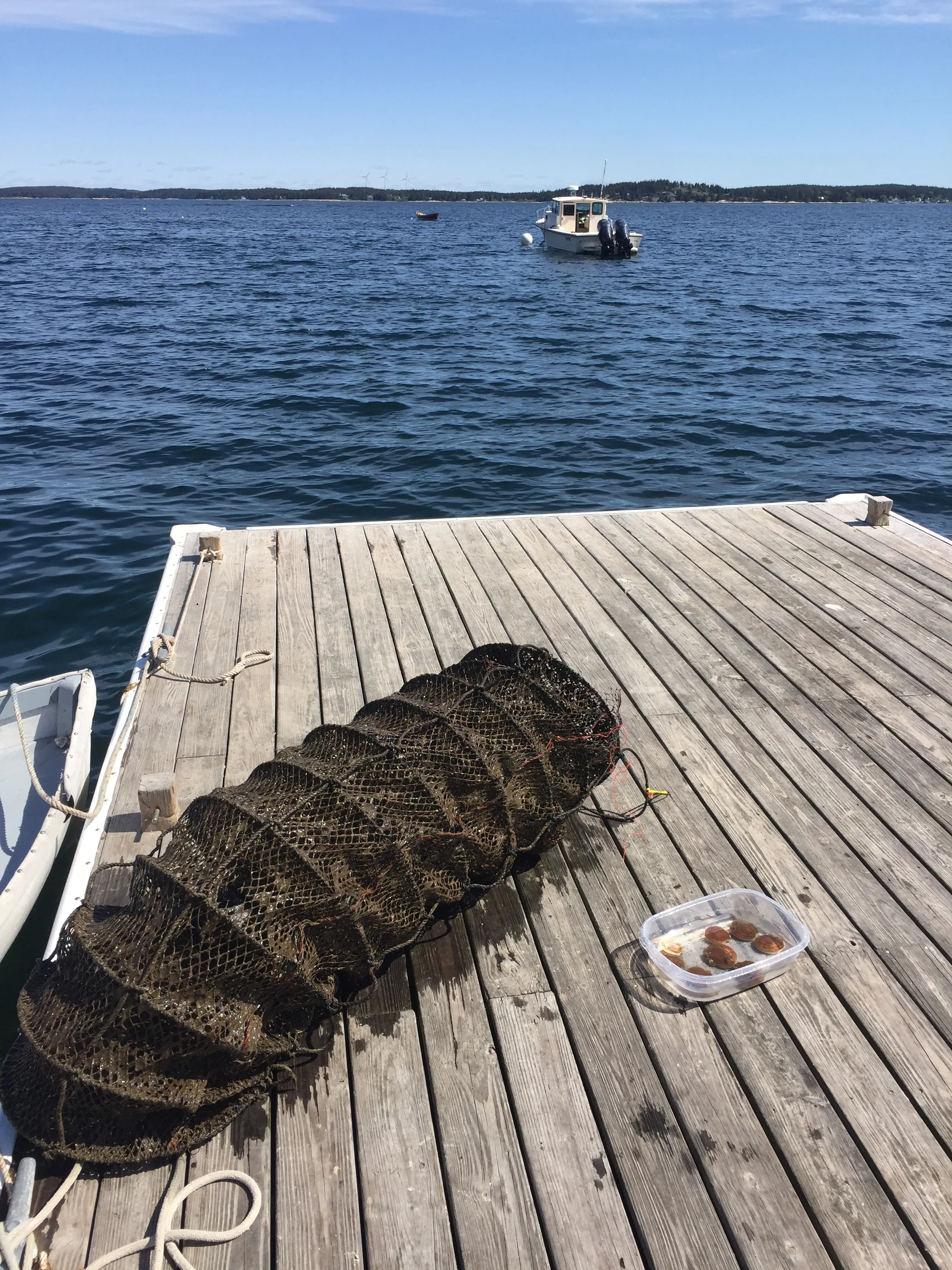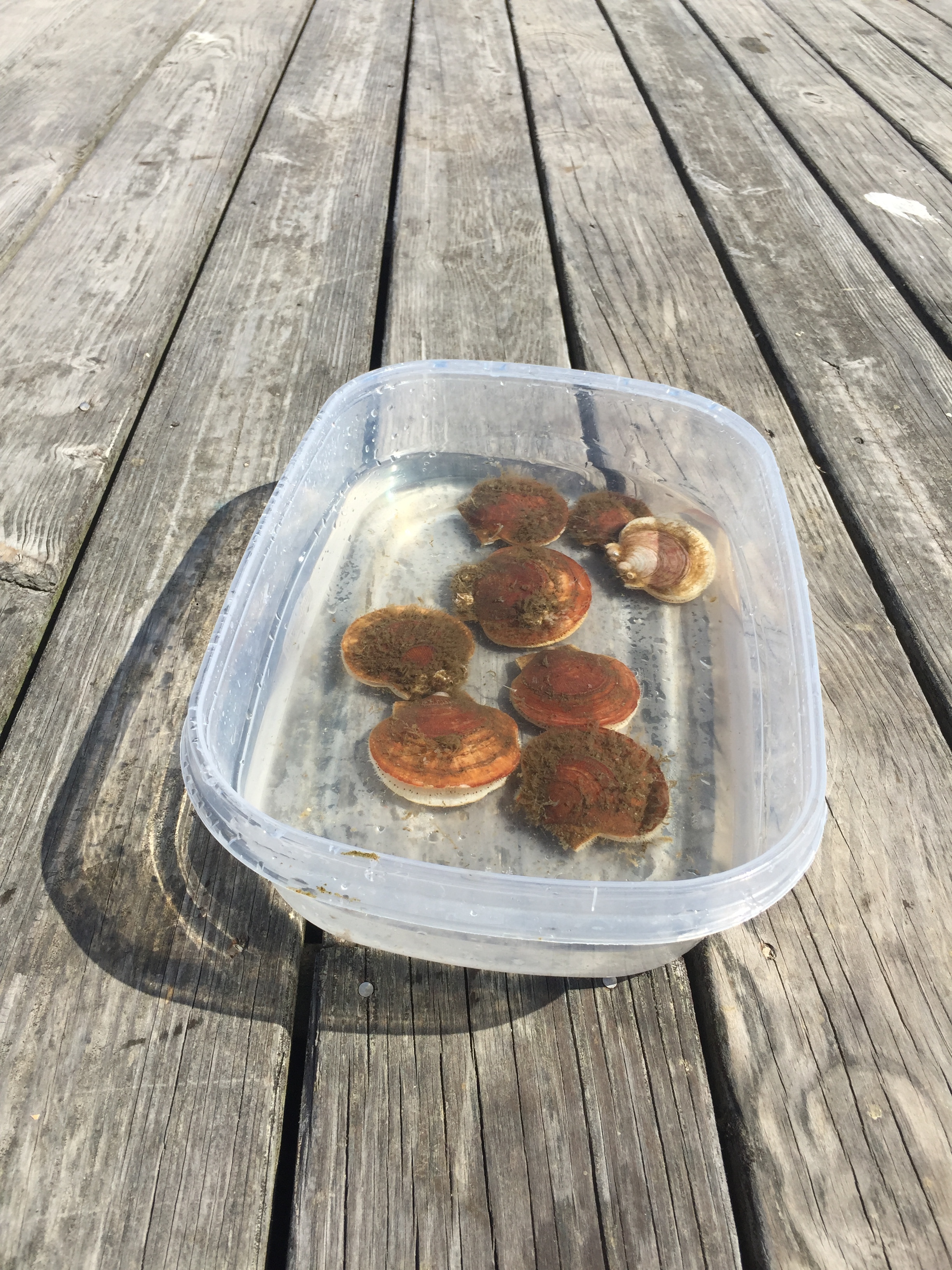Guest blog post by Science Educator Alex Griffith
It’s increasingly difficult to pick a favorite activity to lead with students, but I think that the discussion of aquaculture, and more specifically scallops, is quickly becoming one of my most looked-forward-to lessons to teach—especially now that I know how to pronounce the word the way Mainers do (tall “a,” as in y’all: “scahllop”).
The lesson starts off pretty straightforwardly, with a simple question asking students what they think aquaculture is. We then move into a discussion about the local Penobscot Bay lobster industry and the research Hurricane Island is doing regarding the sustainability of kelp and scallop aquaculture as potential supplements to the lobster fishery here. Unfortunately, the kelp often doesn’t hold students attention as much as the scallops do, but scallops are a little bit easier to identify with (I guess).
A lantern net loaded of scallops enjoys a beautiful day on the docks.
We start off by talking about the lifecycle of the scallop, from spawn to spat to full-grown adult. This of course entails a discussion of how baby scallops are caught in spat bags, then spend their growth phase in the bottom cage, and are finally moved into their final home in the scallop high-rise in our lantern nets or ear hung lines. After a few more minutes of conversation regarding the sustainability of aquaculture, yada yada yada (this is when some groups start to get antsy), what do you know: students want to go look at real, live scallops.
So I grab a bucket and off we go to the dock.
Some of the students tend to lose a lot of their enthusiasm as soon as they see the condition of our lantern nets, which are covered in brown algae, but for most of them, hearing the scallops snap shut as they leave the water is enough to get them excited to hold one. After filling the bucket with saltwater and throwing a few scallops into it (hopefully a few of them will start to swim around), students then get the chance to hold them. Of course, in the process of opening and closing, scallops usually spit water out—always eliciting a scream or two from some of our more squeamish students. Additionally, I always warn students that the scallops might “bite”; not intentionally, of course, but still enough to surprise you.
A bunch of scallop friends spending some quality time away from their lantern net home.
Some of the best conversation I’ve had with students has come by way of our scallops. This past week with Nobleboro Central School, I had a discussion with a student about the difference in perception and consciousness between scallops and humans and how (in my opinion) it’s all but impossible to say which life experience is “better” because they’re so different. Talking about aquaculture sustainability, specifically how scallops and kelp being grown for eventual harvest still contribute to the local ecosystem, is also great, especially when we can tie it into how other fisheries have collapsed and how well-run the lobster industry is.
Not quite full-grown, this scallop has a few more years in a lantern net before it is of harvestable size.
All in all, scallop and aquaculture are fun to teach in every way—the coupling of the in-class discussion and lesson with the hands-on scallop experience on the dock is a cohesive experience that really does manage to bring it home for a lot of students.
Now if only we could eat the scallops.




